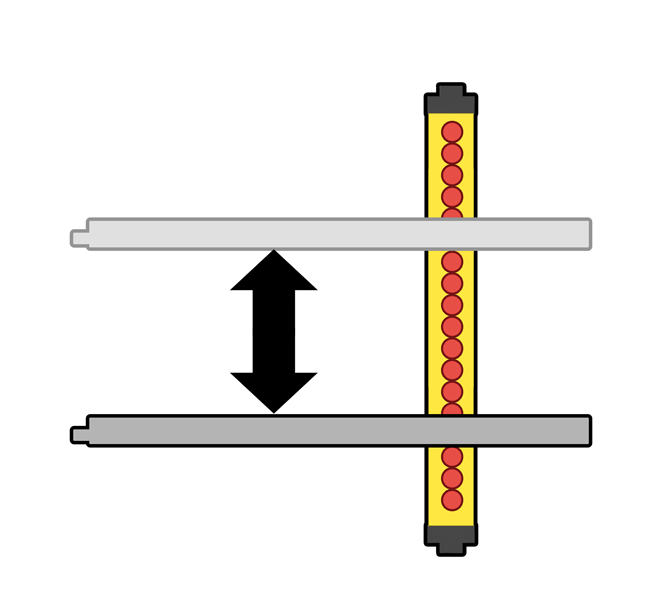Blanking function
Blanking is an auxiliary function of safety light curtains for which the introduction of an opaque object inside parts of the light curtain’s protection field is allowed without causing the stoppage of the machine. Blanking is only possible in the presence of determined safety conditions.
The blanking function is therefore particularly useful when the light curtain’s protection field must be inevitably intercepted by the material being worked or by a fixed or mobile part of the machine.
In practice, it is possible to keep the light curtain’s safety outputs in an ON condition, and the machine working, even if a pre-determined number of beams within the protection fields are being intercepted.
Fixed Blanking allows a fixed portion of the protection field (i. e. a fixed set of beams) to be occupied, while all the other beams operate normally.
Floating Blanking allows the object to move freely inside the light curtain’s protection field occupying a given number of beams, at the condition that the occupied beams are adjacent and that their number is not higher than the configured one.
Floating Blanking with compulsory object presence makes the light curtain work in a reverse way within the blanked portion of the protection field. That is, the blanked beams must be occupied during blanking and therefore the object has to be inside the protection field for the light curtain to remain in the ON state. In this case too the object can move freely within the protection field if the above conditions are respected.
Requirements for the blanking function can be found in the Technical Specification IEC/TS 62046 describing additional means required to prevent a person from reaching into the hazard through the blanked areas of the
detection zone.
WARNING!
The use of the blanking function can be allowed depending on the characteristics of the application to be protected.
Based on the risk analysis of your application, check whether the use of the blanking function is allowed for that particular application and with what features.
The use of the blanking function may need a recalculation of the safety distance due to the modified detection capability.




